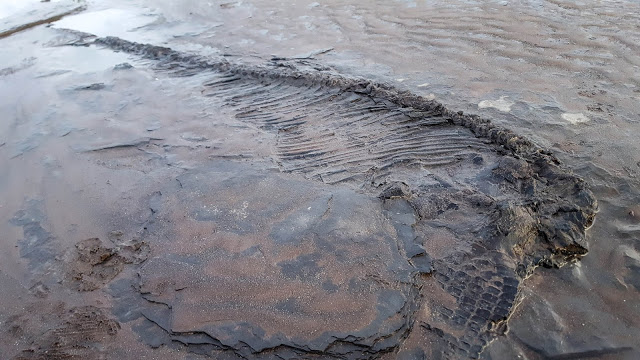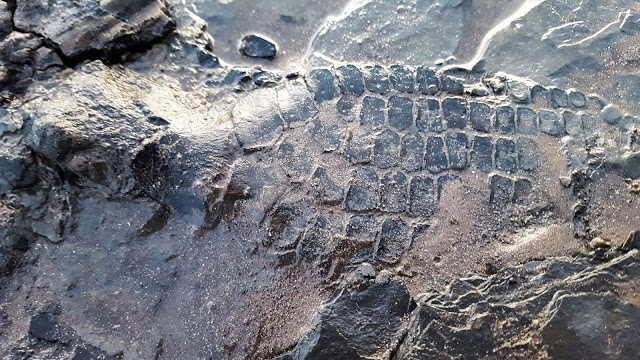Another icthyosaur skeleton has emerged – this time from a Somerset beach. A dog walker discovered the ancient fish in rocks that had eroded as a result of recent storms – go to https://archaeologynewsnetwork.blogspot.com/2019/12/dog-walker-discovers… … the fossil fish, a sort of prehistoric dolphin, is according to the headline virtually sitting on the K/T boundary (when it became extinct). It is also known from the Jurassic – and possibly even the Triassic. Other ichthyosaurs found in Somerset are dated considerably older.
 …
…  … it looks almost like a shale deposit. At Kimmeridge in Dorset ichthyosaurs have been dug out of shale and ledges of shale run out from the cliffs which are a favourite place for fossil hunters. Originally, these ledges or platforms would have been covered by cliffs (or as they would have been, hills) which indicates how far the coastline has receded. Most of the bays around the UK have been modelled by the sea – eroding softer sedimentary material and leading to rock falls of more sold rocks etc. The shale deposit at Kimmeridge is really the rock layers in sequence, the hardness of the shale slowing down the rate of erosion (where the softer sediments above have fallen and been dispersed by wave action and the tides). Storms will often reveal fossils otherwise unseen prior to the storm.
… it looks almost like a shale deposit. At Kimmeridge in Dorset ichthyosaurs have been dug out of shale and ledges of shale run out from the cliffs which are a favourite place for fossil hunters. Originally, these ledges or platforms would have been covered by cliffs (or as they would have been, hills) which indicates how far the coastline has receded. Most of the bays around the UK have been modelled by the sea – eroding softer sedimentary material and leading to rock falls of more sold rocks etc. The shale deposit at Kimmeridge is really the rock layers in sequence, the hardness of the shale slowing down the rate of erosion (where the softer sediments above have fallen and been dispersed by wave action and the tides). Storms will often reveal fossils otherwise unseen prior to the storm.
